Encompassed by royal vintage architecture of the Rambagh Palace in Jaipur and a sweeping green carpet view of the finest classical cars once owned by the Maharajas and equally enviable collectors, Simon Kidston had a tough task at hand – to judge from among 80 of these beauties, the best of the best.
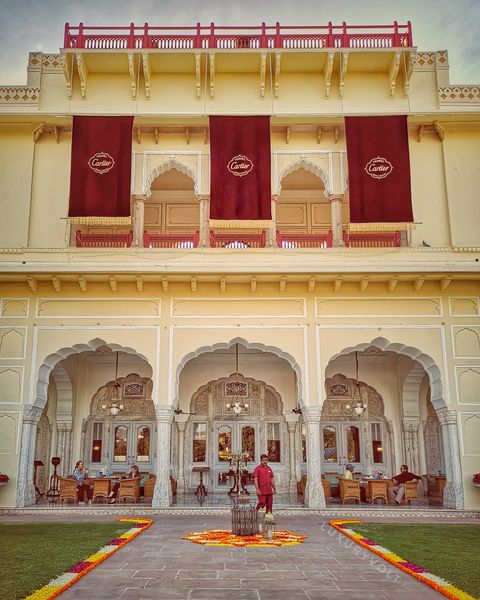
At the Cartier Concours d’Elegance 2019 edition, Luxuryvolt spent some time with the one of the most recognised connoisseurs of classic cars to simplify the art of investing in vintage cars and know who had a higher chance of bagging the trophy this time.
Luxuryvolt: You have been consulting in the Vintage car trade for a good a number of years . What sort of demography have you noted takes more interest, especially the younger generation when it comes to appreciating classic motors?
Simon Kidston: It’s a very good question and one of the issues that is constantly on the mind of anybody who is involved in the classic car world. One of the really pressing questions at the moment is exactly what you just voiced. Are classic cars going to appeal to next generation and those beyond? I think there are various points at play.
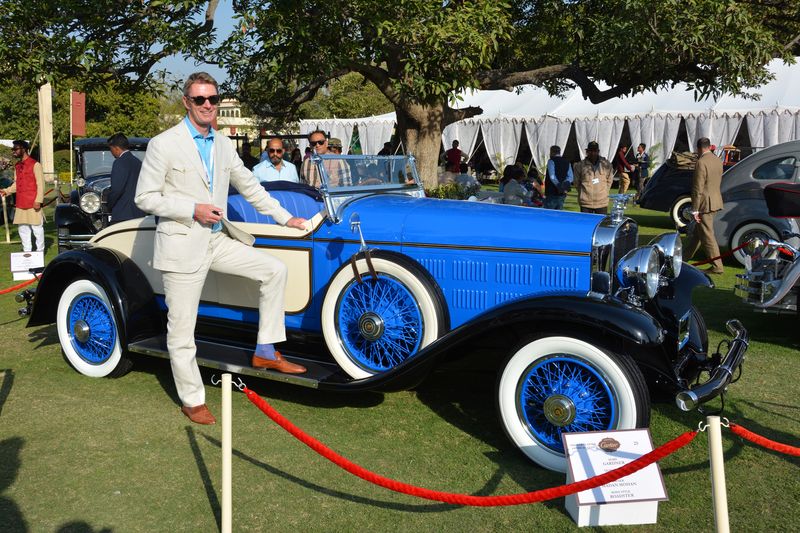
There is demographic change. Every generation of course tends to relate to the things that they aspire to, in their youth. In the modern cars there is technological change. We now see the emergence of electrical cars but also self driving cars. There is legislative change because in some European countries it is getting more and more difficult to drive non catalysed cars on the road. All though they do often make exemptions for historic cars.
There is also as you touched upon, the financial aspect of classic cars becoming very valuable. A lot of younger people can’t afford them.
But if you consider, a 100 years ago horses were not so expensive and were a common mode of transport That said, there is great appreciation for the most beautiful thorough-bread horses now, than there ever was. Similarly in the world of Classic cars, particularly cars from the 60s to 90s period are hot and are becoming more and more desirable. So it’s really a case of the best and the rest. The best gats more and more expensive and the rest falls by the way side.
I also noticed that when young people have been collecting for a little bit of time, they start to look backwards in time For eg if a buyer has a 1990 Porsche for maybe 5-10 years, often the next car will not be younger than that but it will be older .
We are starting to see some young people collecting cars from 1930s and 20s and even older than that. But they have always started out on younger cars.
So I think the vintage car market as with any market is not uniform. But on the whole the future is certainly positive. I think it’s particularly positive in countries like India where until now it has not been easy to collect classic cars. Thanks to the internet, and the improving skills sets of the car restorers in this country that is changing.
I think the real growth-area in the classic cars geographical is in India, China, Russia and the Middle East.

Luxuryvolt: That’s very interesting, Earlier, it used to be Europe and America that traded more in classic cars but now you say it is Asia region?
Simon Kidston: You see where is the money being made in the world and it’s all of these countries. When I was in the boarding school in Switzerland all the people at my school were the other nationalities. Apart from the obvious Brits and the Americans there were the Iranian’s after the revolution, the Italians and few other countries Saudi because of the oil boom. Now there are lots and lots of Indians and Chinese. They are the most competitive and the brightest too. That’s also were more money is made in the world.
India is a big growth area for classic cars. It’s starting to become a bit easier than it was 10 years ago to import cars into India.
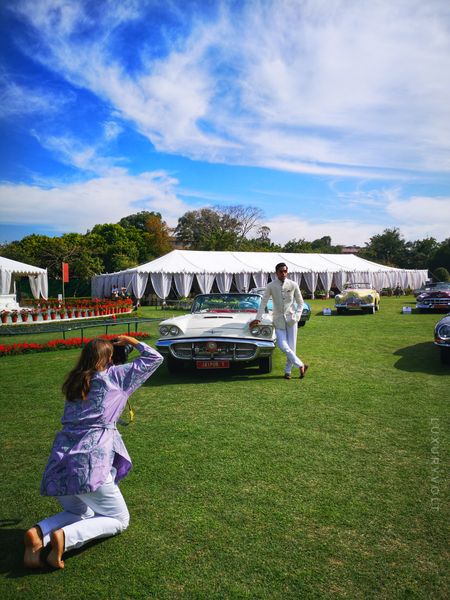
Luxuryvolt: So amongst the collectors who are your clients, what are the popular brands or time period that attracts the younger lot?
Simon Kidston : It is extremely unusual but there are collectors who begin in their 20s. But these are usually the sons of big collectors or at least grew up with classic cars in some shape of form.
The cars they typically start collecting with, are from the 70s to the 2000s. Porsche maybe is the single biggest brand because they are easy to use, reliable. People of that age don’t want to start out with a car that needs a huge amount for up-keep and maintenance. Porsche first and foremost and then we see quite a lot of interest in Ferrari. Although a lot of the Ferraris are out of their range, financially.
We are starting to see interest in some of the less exotic cars like the Lancia Delta from 1970s and 1990s. It was sort of a rally car for the road that is becoming very very popular. Also, some of the Japanese cars like Nissan Skyline and Subarus for example those kind of cars from the 1990s 2000 on a lower price point.
American cars less so except in America. There isn’t much awareness of American cars outside of the US.
Luxuryvolt: It is an undeniable fact that the motivation of many collectors, is collect vintage cars primarily to sell them at higher rates, later. Do you see that behaviour as a dominating trend among classic car collectors now than ever?
Simon Kidston : When people started collecting cars a long time ago particularly in the 1970s, it was considered to be an eccentric hobby. In the late 1980s the idea of making money out of trading classic car took hold. This was followed by equally spectacular crash in the early 1990s and it took a long time for people to gain confidence to start collecting cars again.
The next boom started round about 2008. It is perhaps not coincidental that in our market, boom in the classic car world often coincide with crash in the financial market world. People start looking for alternative investments.
The last five years have been much more stable. It’s not been a major growth market. Despite that there are still lot of people buying cars for financial reasons. They come to people like me and they will ask what should I be collecting, what’s gonna go up! I feel a little bit sad because the investment might make money or not.
Classic cars are not a guarantied conveyer belt to financial riches.
Most importantly they forget what the car is build for driving. It takes me back to another time probably to the time that I have never even experienced.
Luxuryvolt: In the luxury space, often India gets lost between the Middle East and China. What do you think really works in India in the classic cars market?
Simon Kidston: An Indian car collector is somebody who probably has a slightly greater awareness of the history and cultural significance of the car compared to other markets, which do not have the same long standing tradition of patronage of the arts of commissioning of the special cars. You can see some of the greatest and highly customised individual cars were commissioned for the Indian market in the glory days of the Maharajas of the first half of the 20th century. That was a time when many luxury manufacturers would have struggled financially to stay afloat, to exist, if it hadn’t been for the patronage and business of Indian customers. There is a cultural awareness in India that does not really exist in other countries. Like at this Cartier event there is an appreciation for history and culture that we don’t get in other markets. I have spoken to so many people here and the recollect, “Oh! I remember being taken to school in this car. I remember it’s my grandfathers car always been in my family.” I think there is a greater emotional involvement in collecting cars in India than elsewhere.
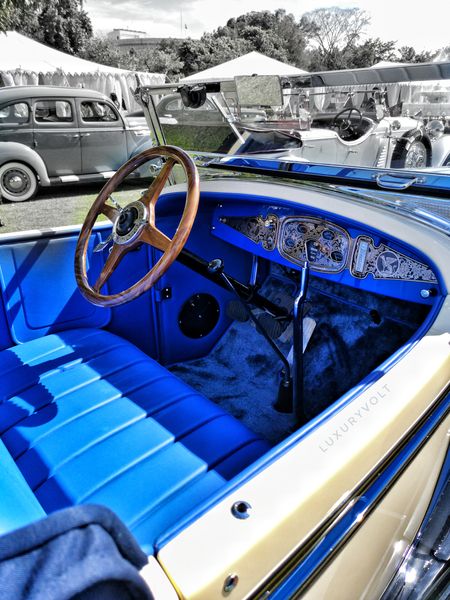
Luxuryvolt: Let’s talk about watches! What was the first watch ever gifted to you?
Simon Kidston: It was a Cartier tank for my 18th birthday, I lived in Italy and my mother bought it from the local jewellery store in Siena. It was a gold Cartier Tank watch with a champagne face. It was sort of retro from the 1920s and 30s and I still have that watch to this day!
The first watch that I gifted myself was a Jaeger LeCoultre Reverso, which I always thought was a great looking watch! It was a limited edition called the geographic that was made in 1909. It’s a duo face and has different time phases on each side. It has a beautiful enamelling. I remember seeing it in a magazine but I couldn’t afford that unfortunately! But then a year or two after working hard, I went for a very good lunch with a friend of mine. It involved probably a couple of bottles of wine. Long story short, I bid an x amount for it in an auction and paid more for it ! I could not say a ‘no’ and I banged my hand down and heard ‘sold to you sir’ so that was the first watch I gifted myself !
Luxuryvolt: I am an admirer of one of your clients but for his work in the world of watches.. Mr John Pierre! How would you describe his car collection?
Simon Kidston: Shame that he is not here to describe it himself. He could say it much better than me. I think his collection is single minded. He bought his first Ferrari in 1970s when he was a young man. He made his fortune in watch business; making watch winders, the crowns.
He build a beautiful museum in the 1980s under his garden and it’s in one of the most spectacular settings. He decided he would focus on his first passion which was Ferrari. He approached the collectibles with very visual discipline. Everything would be red and everything would have some kind of history and would be restored to perfection and that’s exactly what he has achieved. He has two collections in the same location. There is another collection of other car makes as well, at his second home.
Luxuryvolt : Which car brand is the most wanted one in terms of performance at auctions?
Simon Kidston: The go to brand in car-collecting-terms is Ferrari. Rightly or wrongly that is the make most collectors would tend to gravitate to. It’s an old brand that has made many cars therefore it’s easy for the collectors new and old to categorise the brand’s motor hierarchy and Ferrari doesn’t need an introduction!
The older Ferrari’s from the late 40s and the early 1950s can sometimes look a little bit goofy. They are not easy to drive often, right hand drive. They are always manual of course, not synchronised gear box. Whereas when you get to the younger Ferrari cars, they tend to be build in very large numbers like the 1980s and 90s. The sweet spot tends to be 1957-1973. It was the golden era for most cars.
Bugatti is of course reborn in recent years thanks to Volkswagen. But for long time even Bugatti was forgotten by younger generation of car enthusiasts.
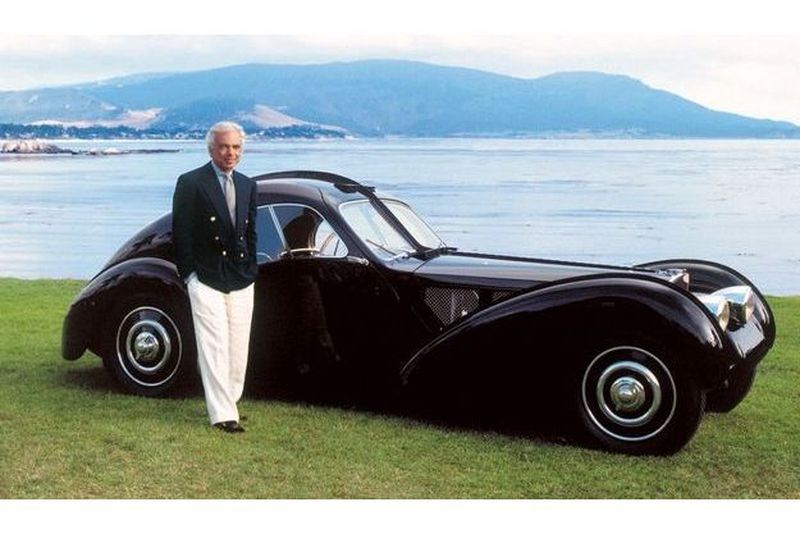
Luxuryvolt: Which of your clients has the most envious classic car collections that you would perhaps like to borrow?
Simon Kidston: If I could borrow anybody’s collection it would probably be of Ralph Lauren. His collection is put together a long time ago when it was easier to find rare cars. He has a great eye for design. He has been very successful in business that has given him means to hold on to these cars which many other collectors may not. He also has a great place to display them. He build a museum in the east coast of America, in Massachusetts. Ralph’s collection is not based around one make and has got some amazing Ferraris ever made and he has also got some of the greatest Mercedes and some of the greatest Jaguars some of the greatest Bugattis. It is really a dream collection and of course the perfect home outside where you wake up on a Sunday morning and take em for a spin. It’s hard not to want to come back as Ralph Lauren in the next life.
Luxuryvolt: Three cars from his collection that you want him to gift you (in your dreams!)
Simon Kidston: All of them actually! But three!? Almost sinister super car from 1937 Bugatti type 57 SC Atlantic there are only two and half of them in the world! Two survived and the other was cut in half by a train in the 1950s when it got stuck on the level crossing.

Another one is the Count Trossi Mercedes. Count Trossi was an Italian noble-man from the north of Italy. An aristocratic racing driver and was actually on the board of Ferrari before. Count Trossi commissioned from an unknown coach builder, an extraordinary body two seats of rouge. It was used as a Mercedes racing car and that’s why it is know as the Count Trossi Mercedes. It has got the longest bonnet you have ever seen! It looks ridiculous it looks fabulous! It has a very very pointed tail, huge! Great steering wheel. It went through various major collections until Ralph Lauren bought it in the late 1980s. In fact, I think he dint even want to buy it but the man who had the Atlantic Bugatti said to Ralph ‘ I’ll sell you the Bugatti if only you buy the Mercedes as well’ And he did and I bet he is glad that he did!
The third I will probably pick is the Bentley, the blower Bentley. Blower is a nick name for super charger like a turbo charger today. It’s the device that pushes the fuel through the engine faster than it would otherwise and gives the car more power. Blower Bentley is a Bentley racing car that was build by one of Bentley’s customers. Mr Bentley was completely opposed by the idea of putting a super charger on one of his cars “it’s a bastardisation of cars” he said, that’s quoting Mr Bentley Then a lady called Ms Dorothy Paget a very wealthy lady bank-rolled the Bentley project and this particular car was raced by a driver Tim Berken. Ralph Lauren owns the car that’s arguably the most historic and valuable Bentley in existence. It is also one of the most charismatic British cars of all times. My uncle also raced those cars when he was one of the Bentley boys, so I have a personal attachment to this car .
Luxuryvolt: Your advise to the young car collectors on how to invest in vintage car.
Simon Kidston I would not advice people to invest or buy vintage cars solely for investment. I would tell them to buy from your heart. It doesn’t need to be something expensive, A car of a certain age gives you an emotional reward, which you will struggle to get from the modern car where everything is so homogeneous. I think you can say the same about the watch world. Vintage is just usually more interesting and more rewarding. If it makes a profit, great but buy it because you love it and enjoy using it. Keep on progressing and see what pushes your buttons. Don’t buy anything for financial reasons to start with buy something that speaks to you from your heart and when you see it you know what it is.
